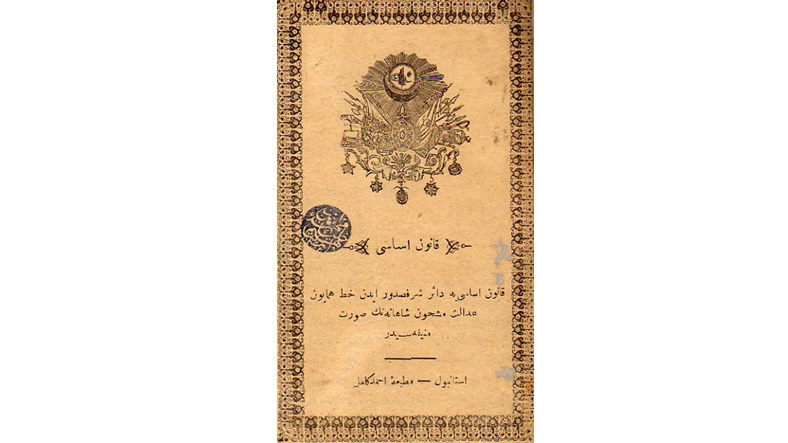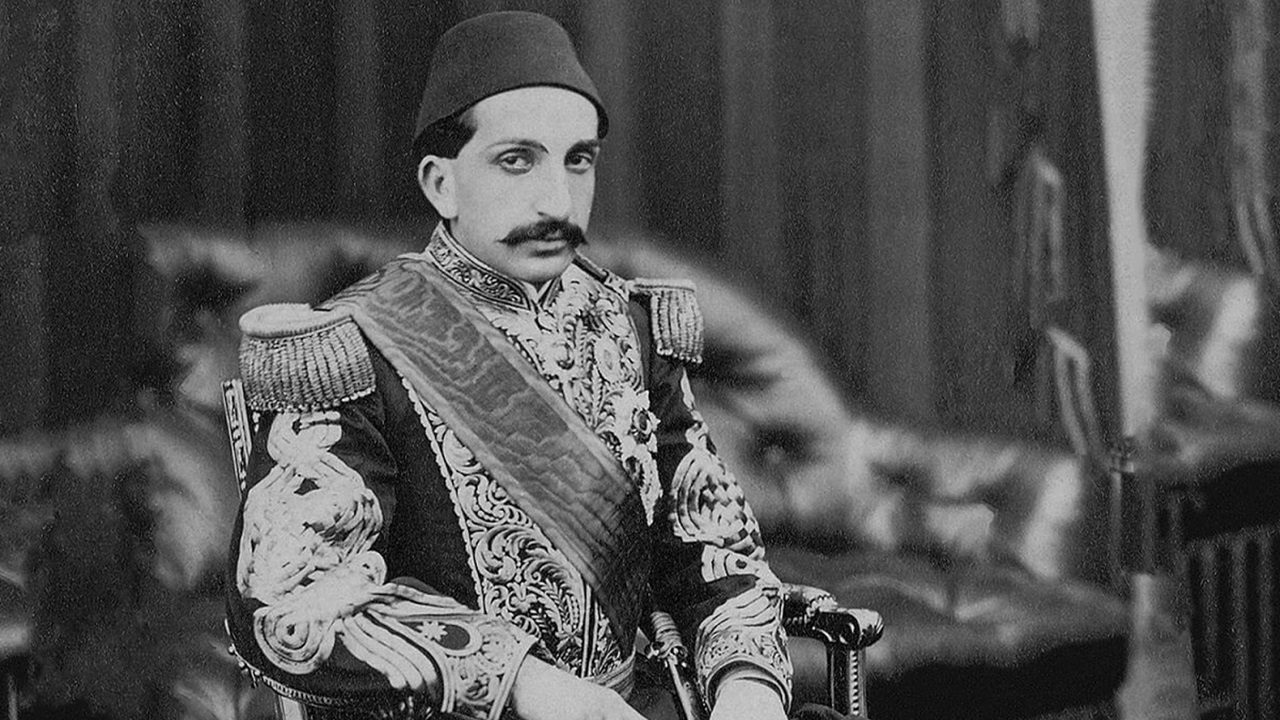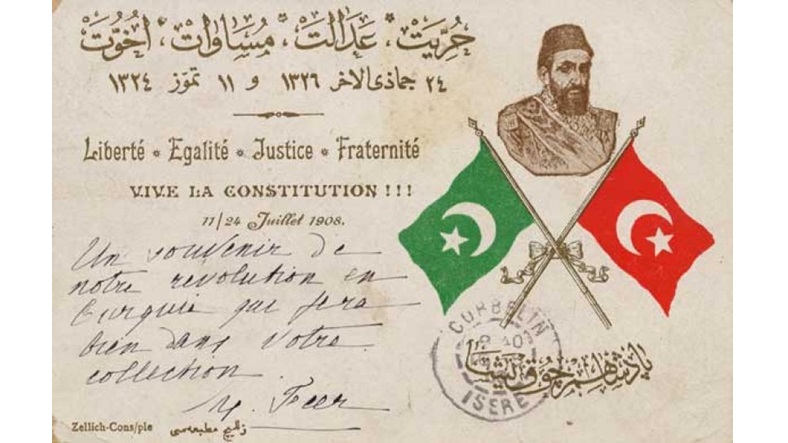The Basic Law, also known as the 1876 Constitution, took its place in history as the first and last constitution that came into force in the Ottoman Empire. In fact, the Basic Law, which emerged as a result of constitutional studies that lasted for many years, is accepted as an indicator of our westernization effort.
Especially in recent years, changing the 1982 Constitution that we use today has always been on the agenda. Quite harshly and casuistically, this constitution is neither the first nor the last constitution of the Republic of Turkey. However, we have another constitution, the Basic Law, which is mentioned as the first and last. The Basic Law, which came into force in the Ottoman Empire It is the first and also the last constitution.
Preparing a constitution like the Basic Law was not an idea that suddenly came to the minds of statesmen. Many constitutional studies had already been carried out before. Of course, since none of these are accepted as a real constitution, the Basic Law is mentioned first. The Basic Law, which the Ottoman Empire moved away from absolute monarchy and winked at the Westerners, was an innovative text in many respects, but could not create the desired change.
Let us explain briefly for those who do not know: What is the Basic Law?
Kânûn-ı Esâsî, also known as the 1876 Constitution, means fundamental law in today’s Turkish. First published on December 23, 1876 and the Basic Law, which was abolished for a period but later came into force again, is known as the first and last constitution of the Ottoman Empire. It was completely abolished with the entry into force of the 1924 Constitution.
Before going into details, let’s look at the constitutional studies before the Basic Law:
Sened-i İttifak, which is considered the first constitutional activity in Turkey, emerged on September 29, 1808. III. Selim was dethroned due to his innovative movements. instead of IV. When Mustafa passed away, Grand Vizier Alemdar Mustafa Pasha met with the Notables and made an agreement. In this agreement called Sened-i İttifak, the sultan said that he would protect the Ayans, and the Ayans promised loyalty to the sultan.
Considered as the most concrete step of the westernization efforts in Ottoman history, The Tanzimat Edict was declared on 3 November 1839. The edict, also known as Gülhane Hatt-ı Şerif, was prepared during the reign of Sultan Abdülmecid. The Tanzimat Edict, which provides security of life, property and honor to all citizens, aims to prevent Europeans from interfering in our internal affairs by giving them some of what they want.
The Reform Edict, also known as the Reform Hatt-ı Hümâyûnu, was declared on 18 February 1856. With the Reform Edict prepared during the reign of Sultan Abdülmecid Non-Muslims were given too many rights. We explained the details about the Reform Edict, which was prepared to give Europeans what they wanted, in our article here.
For what purpose was the Basic Law prepared?

Roughly speaking, the purpose of preparing the Basic Law was to tell westerners, ‘Look, we are just like you.’ means. The Ottoman Empire, which wanted to comply with the constitutional movements that started in the West, He finally completed his constitutional studies and moved to a constitutional constitutional order with the Basic Law.
Of course, it was not possible to suddenly switch to a democratic government in a country that had been ruled by absolute monarchy for hundreds of years. The state in which the Basic Law was first declared It did not fully limit the sultan’s powers. For this reason, changes were made to it many times. In other words, the aim was to fully incorporate the principle of representation of the nation into state life.
Who prepared the Basic Law and during which sultan’s reign?

II came to the throne on August 31, 1876. Abdulhamid assigned Mithat Pasha, the grand vizier of the period, to prepare a constitution. Mithat Pasha established a commission called Cemiyet-i Mahsusa, which he chaired. The constitutional text prepared by the commission was presented to the sultan, a few more changes were made and finally it was declared on 23 December 1876 under the name of Kânûn-ı Esâsî.
How was the Basic Law prepared and which countries’ constitutions were taken as an example?
Things were quite chaotic before the Basic Law. First, Abdulaziz was dethroned and Murat V was brought to the throne. He was dethroned because he was mentally unstable and finally came to the throne II. Abdulhamid was brought. While the pressure from the West continued, the Young Ottomans, including important names such as Namık Kemal, began to openly talk about the constitution.
Therefore II. As soon as Abdulhamid came to the throne, he ordered Mithat Pasha to prepare a constitution and the created commission started its work. The first drafts prepared by the commission were inspired by the 1875 French Constitution and the 1831 Belgian Constitution. This draft prepared by a different commission formed by the sultan It was re-examined and edited and took its final form. Of course, it was later changed many times.
So, what are the basic features of the Basic Law?

The Basic Law, which consists of 109 articles and was later amended 7 times on different dates. Its most fundamental feature is that it places the state in a constitutional order. The Basic Law, which reorganized the most basic organs of the state, opened the door to the understanding of democracy in the Ottoman Empire.
The Basic Law, the first and last constitution of the Ottoman Empire, gave the people the right to vote and said that elections should be held every 4 years. Executive authority was given to the Board of Deputies headed by the sultan. In the Basic Law, there are two assemblies called the Parliament of Deputies and the Parliament of Notables. The laws created by the government, which is responsible to the sultan, must comply with sharia, and the sultan has veto power.
Some of the most important articles of the Basic Law:
Since the Basic Law is a comprehensive constitution with 109 articles, we do not include these articles one by one. You can access all the Basic Law articles through the link here. To summarize Fundamental rights and freedoms are mentioned in the first 7 articles, Articles up to Article 26 include the rights and freedoms of Ottoman citizens.
While articles 27 and 38 include the characteristics of the executive body, The responsibilities of civil servants are explained up to article 41. Between the 60th and 80th articles, the responsibilities of the Parliament and the Notable Assembly are explained. In the following articles, the appointment of judges, the responsibilities of the Supreme Court and the provincial system are explained.
The results of the Basic Law:
With the Basic Law, now It has been clearly seen that a new era has begun in Turkish territory. The sultan’s powers were limited and the constitutional monarchy period began. It would not be wrong to say that with the Basic Law, the foundations of the Republic of Turkey, which was declared later, were laid.
The first and last constitution of the Ottoman Empire What is the Basic Law and what are its articles? We answered frequently asked questions such as: Who knows, maybe the Basic Law could have extended the life of the Ottoman Empire if it had not been prepared so late.
If you enjoy this type of content, you may also want to read:
RELATED NEWS
What is the ‘Admiral Bristol Report’ that proved the legitimacy of the War of Independence to the Whole World? Importance, History and Substances
RELATED NEWS
